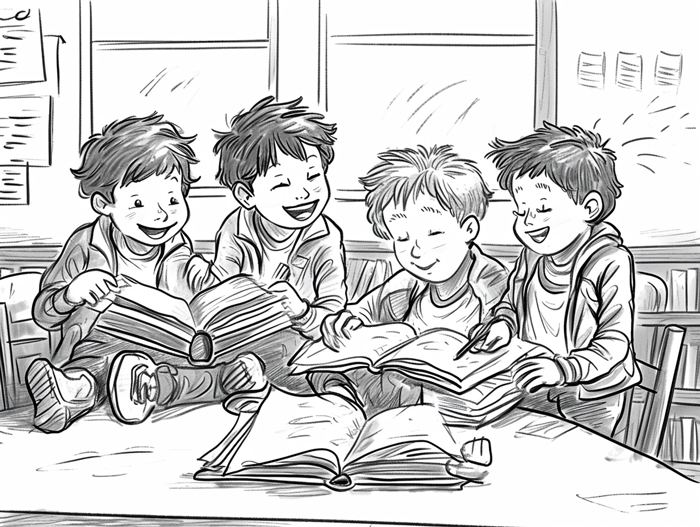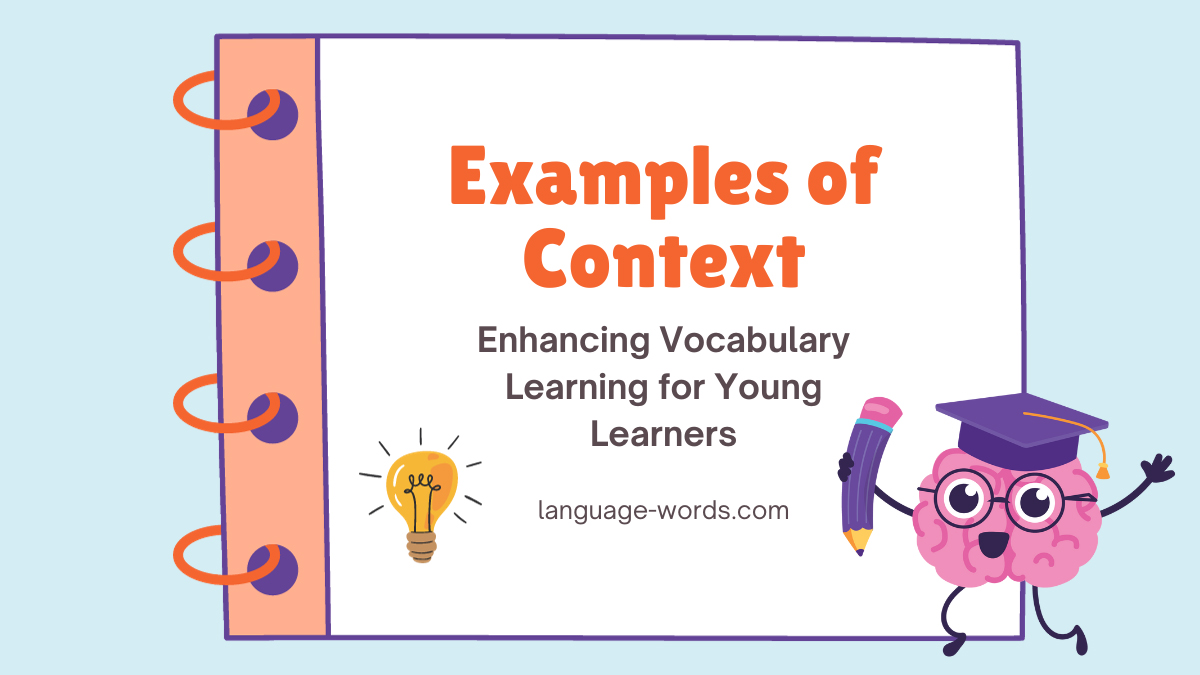When it comes to understanding the meaning behind something, context is key. It provides the necessary background information that helps us make sense of the situation at hand. Whether it’s a conversation, a piece of literature, or a historical event, context plays a vital role in shaping our understanding. In this article, I’ll explore some intriguing examples of context that highlight its importance in various aspects of our lives. From the way we interpret language to the way we analyze art, these examples will demonstrate just how crucial context is in shaping our perception and comprehension. So, let’s dive in and discover the power of context together.
Imagine reading a sentence without any context. It becomes a jumble of words, lacking meaning and purpose. This is where context steps in to provide clarity and significance. Take, for instance, the sentence “I’m going to the bank.” Without context, we’re left wondering if the person is referring to a financial institution or the edge of a river. However, when we add the context of a conversation about running errands, it becomes clear that the person is going to the bank to handle financial matters. This simple example illustrates how context helps us decipher the intended meaning behind words and phrases. In this article, we’ll explore more examples like this, shedding light on the importance of context in our daily lives.
Definition List For Examples of context

Definition List For Examples of Context
As a Kindergarten or preschool teacher, understanding the concept of context is essential when teaching easy words to kids. Context provides the necessary background information that helps children make sense of what they are learning. Let’s explore some examples of how context is crucial in teaching vocabulary to young learners:
- Environmental Context: When introducing new words, it’s important to provide kids with the context of their physical surroundings. For example, if you’re teaching about fruits, bring in real fruits for the children to see, touch, and taste. By experiencing the actual context of the words, kids can better understand their meaning.
- Visual Context: Images and visual aids play a significant role in helping children grasp the meaning of words. Displaying pictures or using flashcards that depict the object or action related to the word being taught helps reinforce the context and facilitates comprehension. For instance, when teaching the word “jump,” showing a picture of a person jumping will help kids associate the word with the action.
- Verbal Context: The words we use in conversations or instructions can provide valuable context for understanding. When teaching children new words, use them in sentences or mini-stories to provide a clear verbal context. For example, if you’re teaching the word “happy,” you could say, “I feel happy when I play with my friends.” By using words within meaningful verbal contexts, kids can grasp their usage and meaning more effectively.
- Social Context: Teaching words within a social context helps children understand how different words are used in various social situations. For example, if you’re teaching the word “please,” explain that it’s a polite word used to request something. Encourage children to use it when asking for things or making polite requests, creating a social context for the word.
- Cultural Context: Cultural context plays a significant role in understanding vocabulary. Incorporating cultural elements, such as traditional songs, dances, or stories, can enhance children’s comprehension and make learning more engaging. For example, when teaching about animals, you can share cultural stories that feature those animals, helping children relate the words to their cultural context.
Understanding the importance of context is crucial in teaching easy words to Kindergarten and preschool children. By incorporating environmental, visual, verbal, social, and cultural context, we can enhance children’s vocabulary learning experience and help them make connections between words and their meanings.
What is Context?
Definition of Context
Context refers to the surrounding circumstances or conditions in which something exists or occurs. In the context of teaching vocabulary to young learners, it refers to creating an environment that helps children understand the meaning of words.
Importance of Context
Context plays a crucial role in the vocabulary learning experience of young children. It provides meaningful connections that allow children to make sense of new words and concepts. Here’s why context is important:
1. Enhances Understanding: Incorporating context helps children grasp the meaning of words more easily. When words are presented in a relevant context, it provides clues and associations that allow children to infer the meaning of unknown words.
2. Provides Deeper Learning: Context provides a rich learning experience by connecting words to real-life situations. It helps children understand how words are used in different contexts and builds their ability to apply vocabulary in diverse situations.
3. Facilitates Retention: When words are learned in context, they are more likely to be remembered and retained. By associating words with familiar and meaningful situations, children can recall and use those words effectively.
4. Promotes Transfer of Knowledge: Understanding words in different contexts allows children to transfer their knowledge and apply it to new situations. It helps them make connections between words and expands their overall vocabulary.
5. Encourages Meaningful Communication: Contextual learning promotes meaningful communication by enabling children to use words accurately and appropriately in conversations and writing.
By harnessing the power of context, teachers can create engaging and effective vocabulary learning experiences for young learners.
Examples of Context

Context in Language
In language learning, context plays a crucial role in helping young learners understand and remember words. Let me give you a few examples to illustrate this:
- Pictures and Objects: When teaching the word “dog,” I’ll show my students a picture of a dog and maybe even bring in a stuffed animal or a toy dog. By seeing the object in a real-life context, they can make connections and understand the meaning of the word more easily.
- Actions and Verbs: For verbs like “run” or “jump,” I like to act them out while saying the word. This allows children to see the action in context and associate it with the word, making it more memorable and meaningful.
- Sentences and Stories: Instead of simply teaching words in isolation, I incorporate them into sentences and stories. For example, when teaching the word “cat,” I might say, “The cat chased the mouse.” By providing a context, children can grasp the meaning of the word and use it in a meaningful way.
Context in Communication
In addition to language learning, context is crucial for effective communication. Here are a few examples:
- Non-Verbal Cues: When speaking, our tone of voice, facial expressions, and body language all provide context for the words we say. Young learners need exposure to these non-verbal cues to understand the meaning behind the words.
- Social Situations: Teaching language within social contexts helps children understand how words are used in different situations. For example, role-playing scenarios like a restaurant or a doctor’s office can give them a realistic context for using words like “order” or “checkup.”
- Cultural Context: Language is deeply connected to culture. Introducing children to cultural contexts through songs, stories, and celebrations helps them understand the significance and meaning of words within a broader framework.
Context in Literature
When it comes to reading and literature, context is essential for comprehension and enjoyment. Here are a few examples:
- Background Information: Providing background knowledge about the setting, characters, or historical context of a story helps young readers understand the plot and relate to the characters on a deeper level.
- Vocabulary in Context: Encouraging children to use context clues to figure out the meaning of unfamiliar words while reading builds their vocabulary skills and enhances their overall reading comprehension.
- Themes and Messages: Exploring the themes and messages in a story helps children understand the context in which the characters and events unfold. This deeper understanding allows them to connect with the story on a personal and emotional level.
Context in History
Teaching history to young learners is all about helping them understand the context in which events took place. Here are a few examples:
- Timelines and Chronology: Placing events on a timeline helps children understand the sequence of events and how they are connected. This context enables them to make sense of historical narratives and draw connections between past, present, and future.
- Primary Sources: Introducing children to primary sources like letters, photographs, and artifacts helps them understand the context in which historical events occurred. By analyzing these sources, they can gain insight into the thoughts, experiences, and perspectives of people from the past.
- Historical Perspectives: Teaching history from multiple perspectives allows children to understand the context of different groups of people and how their experiences shaped the events of the past. This promotes critical thinking and empathy.
Context in Art
Art provides a rich context for young learners to explore their creativity and express themselves. Here are a few examples:
- Art Movements: Introducing children to different art movements like Impressionism or Cubism provides them with the context to explore various styles and techniques. This broadens their artistic vocabulary and encourages them to experiment with different approaches to art.
- Art History: Studying art history allows children to understand the cultural, social, and historical context in which artworks were created. It helps them make connections between art and other subjects, deepening their understanding and appreciation for different artistic periods.
- Personal Expression: Encouraging children to create art that reflects their thoughts, emotions, and personal experiences allows them to express themselves in a meaningful way. Providing a supportive and nurturing context for their artistic endeavors fosters creativity and confidence.
As you can see, context is a powerful tool in teaching vocabulary to young learners. By incorporating context into our lessons, we can create engaging and meaningful learning experiences that enhance understanding and retention.
Conclusion
Incorporating context into vocabulary learning for young learners is crucial for their understanding and retention of new words. Throughout this article, we have explored various examples of how context can be integrated into different aspects of education, such as language learning, communication, literature, history, and art. By utilizing context, teachers can create meaningful learning experiences that engage students and make vocabulary learning more effective.
Context allows students to connect new words with their real-life applications, making the learning process more relevant and memorable. Whether it’s through storytelling, real-world examples, or visual aids, providing context helps students grasp the meaning and usage of words in a more comprehensive way.
By incorporating context into lessons, educators can create a dynamic and interactive learning environment that fosters language development and critical thinking skills. Students become active participants in their learning journey, as they engage with the language in meaningful and authentic contexts.
Context is a powerful tool that enhances vocabulary learning for young learners. By incorporating it into our teaching practices, we can help students develop a deeper understanding of words and their applications, ultimately empowering them to become confident and proficient communicators.

